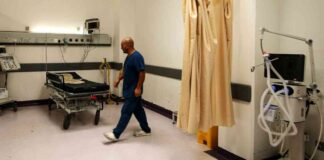The Impact of Long-Term Sickness on Liverpool’s Economy: A Labour Perspective
Wes Streeting’s announcement of plans to prioritize cutting NHS waiting lists in areas with high numbers of people out of work due to ill health has shed light on the significant impact of long-term sickness on Liverpool’s economy. With Liverpool ranking at the top of the list for areas with high economic inactivity due to health issues, it is clear that urgent action is needed to address this pressing issue.
Over the past decade, a combination of austerity measures, an aging population, and the devastating effects of the Covid-19 pandemic have exacerbated the challenges of ill health in Britain. Economic inactivity has surged to over 9 million working-age adults, with a significant portion attributed to record levels of temporary and long-term sickness.
In Merseyside, the situation is particularly dire, with four of the top 10 parliamentary seats in England and Wales with the highest health- and disability-related inactivity rates located in the region. Liverpool’s inner-city Walton constituency, which ranked first in the census, has about one in 10 of its over-16 population inactive due to health issues.
The previous government had made addressing this issue a priority, focusing primarily on tightening the benefits system and implementing tax cuts and childcare reforms to encourage work. However, Labour has taken a different approach, recognizing the need to address the crumbling health service and broader decay in the public sector as key factors in promoting social justice and revitalizing economic growth.
Recent figures reveal that over 7.62 million people nationwide were on NHS waiting lists in July, with more than 40% waiting for more than 18 weeks. On Merseyside alone, nearly 300,000 individuals are on these waiting lists, highlighting the urgent need for intervention.
While establishing a direct connection between high waiting lists and health-related inactivity may not be straightforward, experts, including former Bank of England chief economist Andy Haldane, have highlighted the correlation. Streeting’s initiative to target hospital waiting lists in areas with high rates of economic inactivity is a step in the right direction, but experts caution that a comprehensive solution will require more than just a temporary fix.
As the budget approaches, the government is keenly aware of the challenges posed by economic inactivity due to ill health. Chancellor Rachel Reeves has emphasized the importance of rebuilding the NHS as a core priority in her upcoming tax and spending decisions, acknowledging the need to address both physical and mental health issues that are preventing individuals from entering the workforce.
The economic benefits of tackling inactivity are substantial, with the Institute for Public Policy Research (IPPR) estimating that Britain’s loss of 900,000 individuals from the labor force since the pandemic will cost HMRC £5 billion in lost revenue this year. Additionally, improved health outcomes could save the government £18 billion annually by the mid-2030s.
Streeting’s announcement in Liverpool marks the beginning of a comprehensive plan that will involve all government departments working together to address the issue of economic inactivity due to ill health. This collaborative approach aligns with Keir Starmer’s mission-driven strategy to align all parts of the government towards common goals.
Prime Minister Liz Kendall has emphasized the need to support individuals on long-term sickness leave and claiming benefits to re-enter the workforce whenever possible. Plans are underway to consult with labor market experts, businesses, and unions to develop strategies to support this aim, with a focus on health, education, and employment support.
While it is acknowledged that not everyone in health-related economic inactivity will be able to work, there is concern about the rising benefits bill. The Office for Budget Responsibility forecasts a £30 billion increase in the bill for sickness and disability benefits over the next five years if current trends continue.
Reforming job centers to provide more active assistance in finding employment, as well as encouraging employers to offer flexible working arrangements and training opportunities, will be crucial in addressing the issue of economic inactivity due to ill health. Without strong foundations in health, Britain’s economy may face significant challenges in the future.
In conclusion, the impact of long-term sickness on Liverpool’s economy is a pressing issue that requires urgent attention and comprehensive solutions. By prioritizing the rebuilding of the NHS, improving health outcomes, and supporting individuals in re-entering the workforce, the government can address the challenges of economic inactivity due to ill health and promote sustainable economic growth in the region.

















